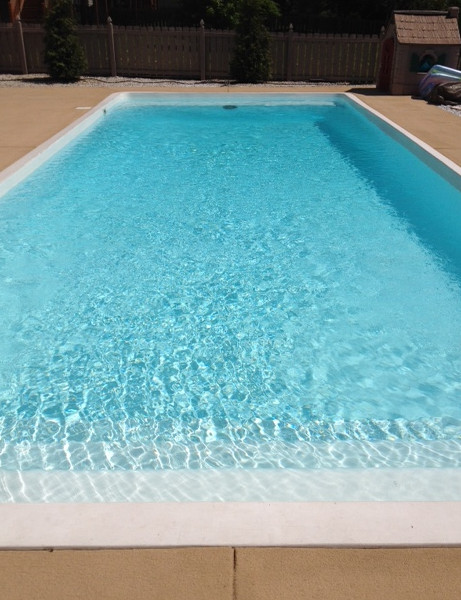How Do You Patch A Plaster Pool
Feel the surface you just processed with your hand. Remember not much or no pressure needed. Let the pool plaster disc do the work. You want the pool plaster to have an even slight texture surface. If you feel areas that are smoother than others. Continue till pool plaster surface is consistent. Debonding and delaminations occur when there is bond failure between the layers of plaster or between the layer of pool plaster and the concrete pool shell. This area becomes “hollow” and a small void develops underneath the plaster.

One day you must make a decision. The pool plaster has been looking worse every season. Delaminations, stains, cracks, and generally dull and lifeless. Magpul dynamics the art of the tactical carbine. You’ve read of the new types of pool plaster options available (in my previous ), and had started looking into prices for resurfacing your plaster pool – when it hits you – what if I painted the pool?
Painting pools has been an option even before pool plastering came around. Back in the day, all pools were painted; it was an annual pool opening tradition. When plaster for pools began to be used, pool owners appreciated the long lasting and durable surface and the smooth white finish. So – let them fight it out! Plaster – who will win?
You decide, I’ll just lay out the facts ~ as I see ’em, and let you decide. Should you paint the pool, or replaster the pool? Longevity Factor: Pool plaster will most certainly take this round.
Pool plaster, when properly mixed, applied, cured and maintained – can last 15-20 years. Depending on the type of paint used, as well as application and curing factors, 2-7 years of life can be expected from a pool paint job. Round 1 goes to the scrappy young fighter’s scorecard – pool plaster wins! Durability Factor: Paints used for pools, spas and fountains, are specifically made for underwater use, and are quite durable against poor water chemistry, temperature extremes and even rough treatment from pool equipment. Plaster however, with it’s usual 1/2 inch thickness, can handle more distress than the thin layer of pool paint.
How Do You Patch A Plaster Pool Cost

Plaster wins again! Prep Work Factor: Both pool paint and pool plaster require that the pool be drained properly and prepared for the new surface. To paint the pool, you’ll need to degrease the surface with TSP, then acid etch the plaster, followed by another washing and scrubbing with TSP. For acrylic pool paints, the pool can be painted damp, but for epoxy paints (the longest lasting pool paint), you’ll need to let the pool air dry for 3-5 days before painting. Tape off the parts you don’t want to paint, and you’re ready to begin. Pool plaster requires a much more industrial prep process.
After draining, the “cut-n-chip” crew arrives, and with tiny saws, they cut the plaster beneath the tile and around all of the wall and floor fittings. Another crew arrives to acid etch the pool, to roughen the plaster surface, which helps the bond of the new plaster coat.
Some plaster companies will make a third trip to apply a “scratch coat” – a rough, textured bond coat that adheres tightly to the old plaster surface, while giving a good surface for the new plaster coat to bond to. This round goes to pool paint, which has much easier prep work.
Application Factor: Once a pool is prepped and ready for paint, the pool painting process is fairly simple. Mix up your pool paint thoroughly and start rolling it on the deep end wall with a 3/8″ nap roller, with a low nap. A 5-gallon bucket with a paint screen is best to move around with, as paint trays tend to spill. Using long, even strokes, apply the first coat, working from the deep end to the shallow end (don’t paint yourself in!). After 4-6 hours, a second coat can be applied, which will require about half of the paint needed on the first coat.
Dry time will vary, depending on the paint and outside temperature. Two to five days later, you can fill up the pool. When pool plaster day arrives, a crew of 4-6 guys will arrive with a large plastering “rig”, or a truck specifically designed for this purpose. One guy remains on the rig, and he mixes up the plaster mix; a mixture of white portland cement and marble dust.
Additives for strength or color can be added to the mix at this time. When ready, the mixer pumps the plaster mix through a thick hose, and the hose man sprays down sections of the pool for the plasterers to begin. With spiked shoes and a bullnosed trowel in each hand, they begin the process of smoothing the plaster evenly over the surface. They need to be careful not to overtrowel the mixture or to delay too long before troweling it smooth. After 3-4 hours (these guys are fast), your pool will be plastered and a sock is wrapped around a garden hose left in the deep end of the pool. With the hose turned on, the pool begins to fill, without stopping, until the pool is full. You will be left with instructions to care for the water chemistry, and asked to brush the pool twice daily for two weeks, or until the plaster dust is eliminated.